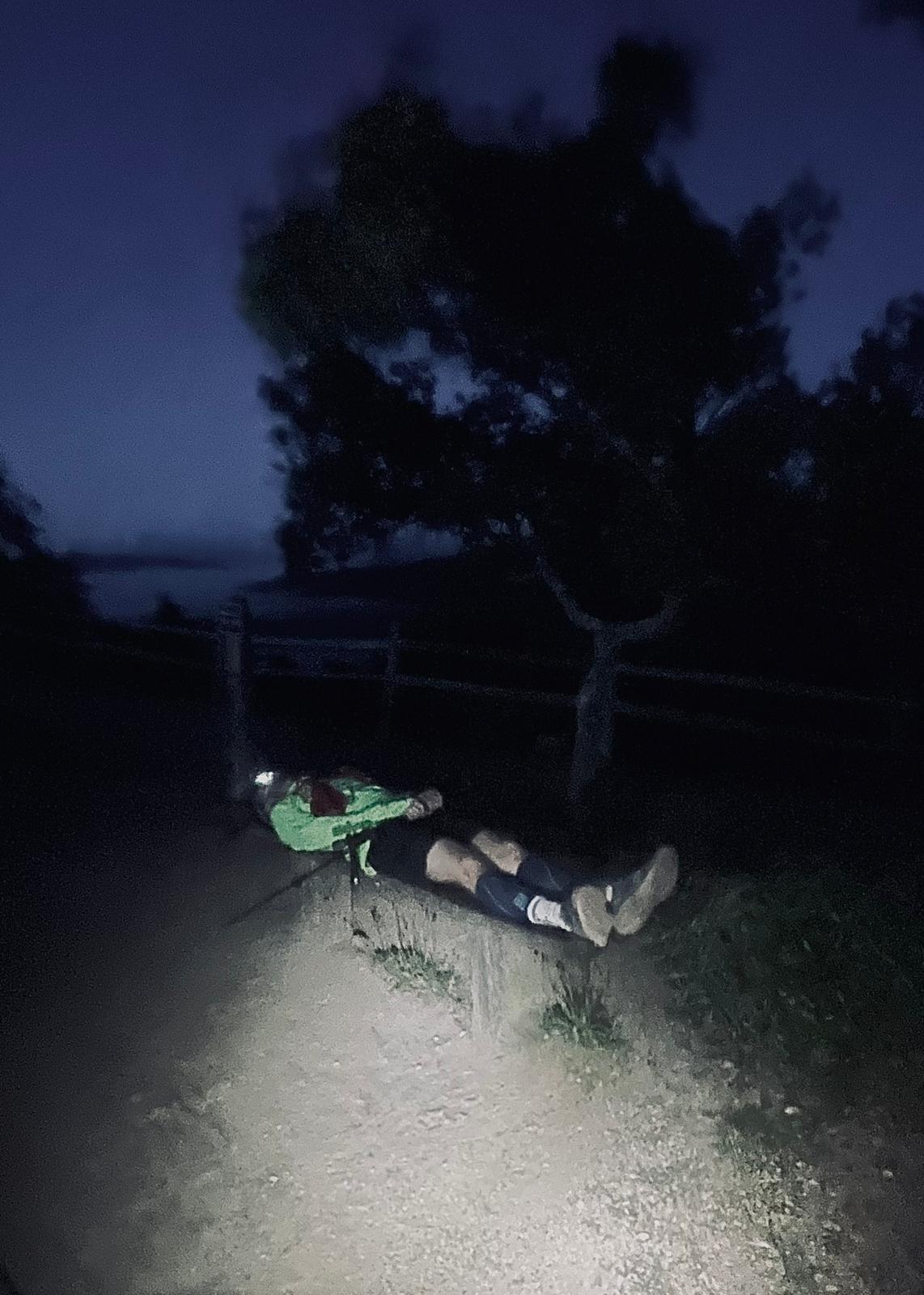
I recently ran my first 100 mile trail run in a little over 29 and a half hours.
Needless to say, I had a lot of time to think, and came up with five observations on strategy:
1. Plan the work, then work the plan
A failure to plan will lead to both performance-lowering distraction during the execution phase as well as ad-hoc, suboptimal decision-making during execution.
To prevent this, I constructed my race strategy and hourly nutrition plan in a six-page, amazon-style strategy document. The document highlighted my general pace and timeline goals, potential risks (from blisters to serious injury), and broke my nutrition plan down into hourly intake of water, salt, and carbs.
I think there’s a fun balance of leaving enough decisions open to make execution fun, while avoiding decision fatigue. An example strategy that worked great for me was a game I made up called “Pick two”: Every hour, in addition to 500mL of Gu Roctane (30g carbohydrates, 150mg sodium) I needed to consume two other items, but I could pick between Gu Gel, Gu Chews, or a solid food like a sandwich. This strategy forced me to normalize my caloric intake, while giving me just enough choice to keep things interesting. If I was very hungry for solid food, I could have two sandwiches (Ok, this never happened), but if I wasn’t, I could have a Gu Gel and Gu Chew (This happened a lot). And, near the end of the race, I could just eat two cups of crushed Doritos and still feel that I was “on plan”.
2. Tracking systems are an essential tool, but not the goal
Tracking and monitoring systems are a great part of executing any large project, but that system cannot distract you from actually accomplishing your goals! I have seem teams sabotage themselves by optimizing their work to their tracking system, instead of the other way around. As someone who loves numbers and tracking, I am also guilty of this.
For the race, my light-weight tracking system was:
- I carried with me a single page tracking worksheet, and at every aid station, a volunteer would fill out what I consumed. This enforced my “Pick two” strategy
- The worksheet also had a spot for my time vs. actual, so I could gauge against pace
- At each aid station, my 500mL bottle should be empty, and if not, I would drink the bottle, unless my pee was completely clear.
This system is probably not useful for your task (I hope it isn’t!) but could serve as an example of a tracking system that did not distract me from the task at hand but could effectively measure my plan to variance. For a great example of an “actual to plan” tracking system for engineering teams, check out this blog: Agile Planning Part 3 — Monitoring and Optimizing
3. Break down insane goals into attainable subgoals (and celebrate them!)
Have you ever watched a race? Almost everyone picks up the pace when they can see the finish line in sight. Conversely, you are most likely to give up or be demotivated when you are tackling a large project and the proverbial finish line is nowhere in sight.
To counter this psychological effect, I always try break down larger goals into into highly visible shorter goals, and give myself rewards for the subgoals.
In the example of this race, I didn’t actually think I could run 100 miles. That’s insane! Instead, I told myself that I was doing a 30 mile run, celebrating, doind another 30 mile run, celebrating, and then racing 40 mile ultramarathon. In fact, I didn’t even start my watch until the last 40 miles, to intentionally deceive myself that I was just starting a race.
To get excited about the initial 30 mile runs, I built myself different menus so that I could look forward to trying new food:
- The first 30 miles was Turkey Sandwiches, Hibiscus Gu Roctane, and fruity Gu Gels.
- The second 30 miles, I got to have my night blend of Gu with my favorite flavors, try a new Gu Roctane Flavor (Summit Tea), eat ramen, and have pudding for dessert.
- Then, I started a 40 miles race, enjoyed Coca-Cola, my wake-up Gu Gel blend, and Doritos, until the finish line.
4. Positive Energy is helpful, contagious, and free!
During the night section, I was joined by a friend who brough a super positive cheery attitude (and music playlist to match!). Positive energy makes hard tasks possible. It’s incredible how much better things are with positive people, and I don’t think I appreciated that until I was the one struggling and a positive teammate helped me out. I’m going to work on being more positive, even if I have doubts. As I recall from feedback I received once: “When in doubt, err on being someone who is pleasant to be around”!
5. Ultras aren’t life: Sometimes it’s better to work in sprints
Sometimes during the race, I would feel fantastic, and start to pick up my pace. Sometimes, I would feel tired, and start to slow down. In both situations, I would make a conscious effort to moderate my pace back towards my target heart rate. However, in real life, there are times when a sprinting and resting method make sense. In some sense, I believe that running 100 miles is a lot better analogy to being a manager - staying positive, monitoring progress, setting goals - than it is being an actual creative or maker. Endurance running is not a creative endeavor, so there is no benefit to pushing oneself beyond a long-term sustainable effort. Maybe I need to take up sprints!